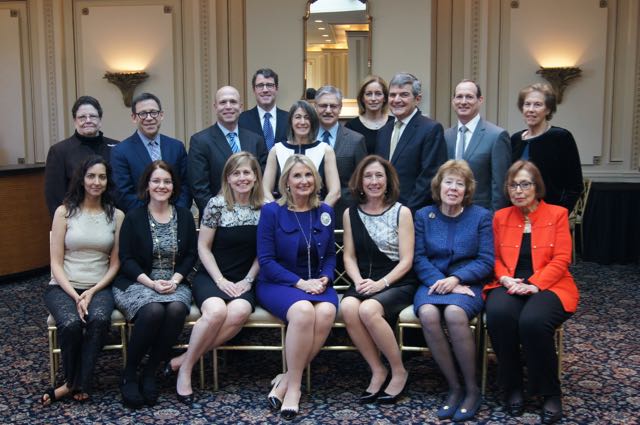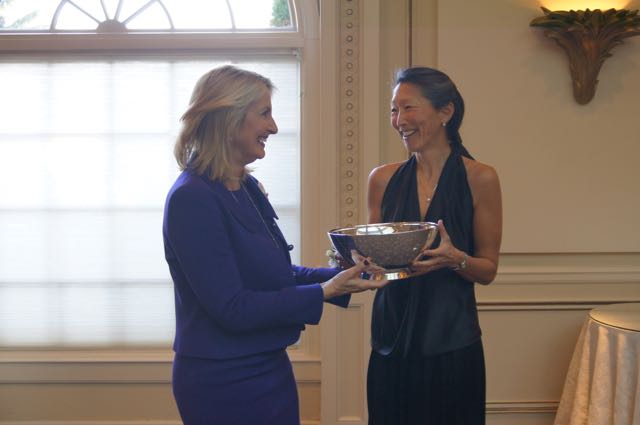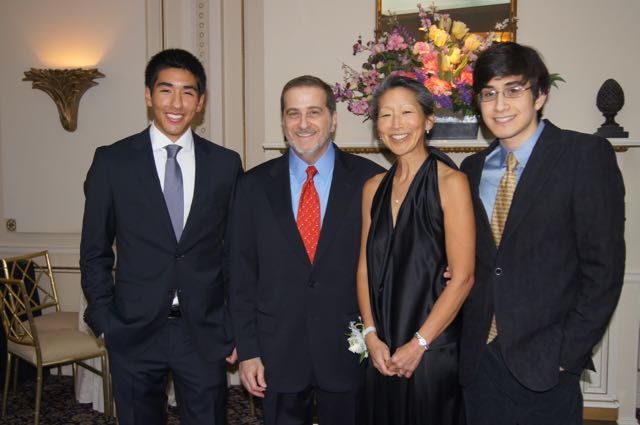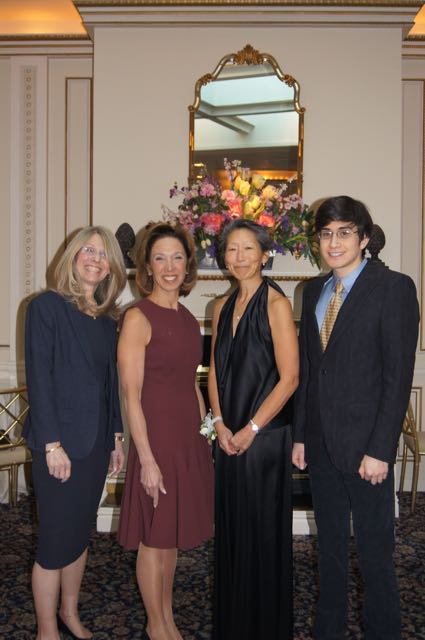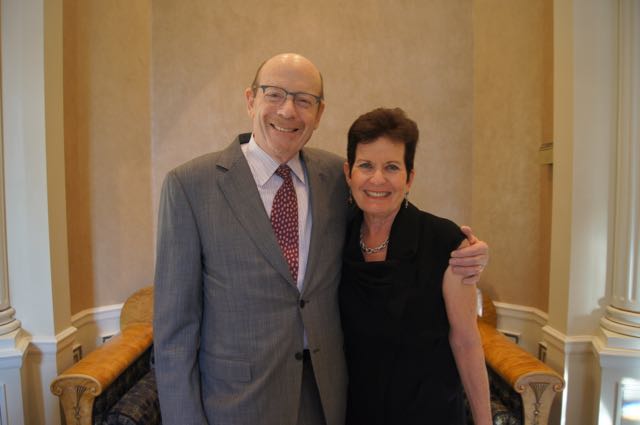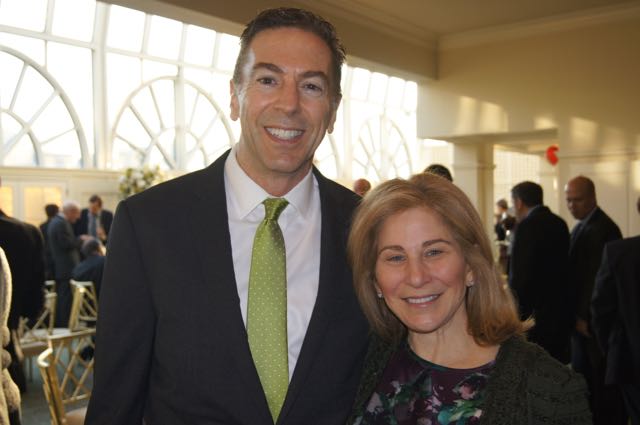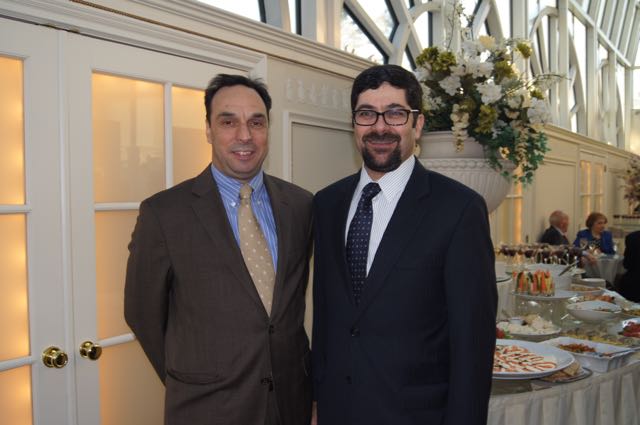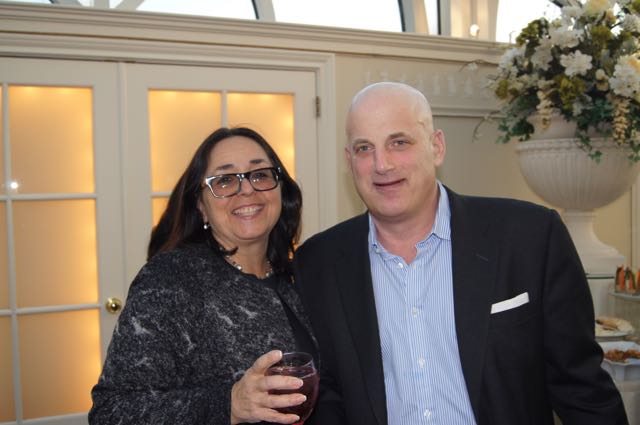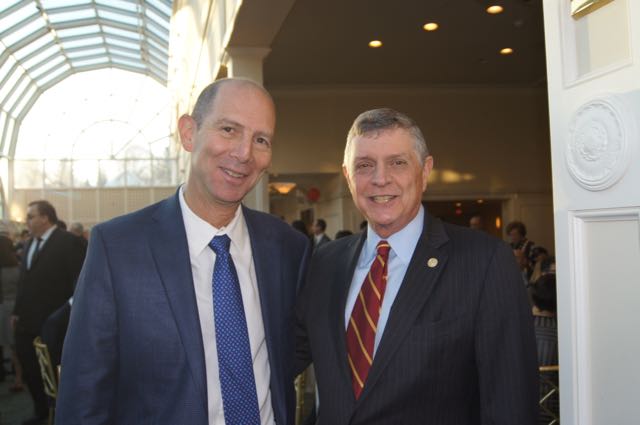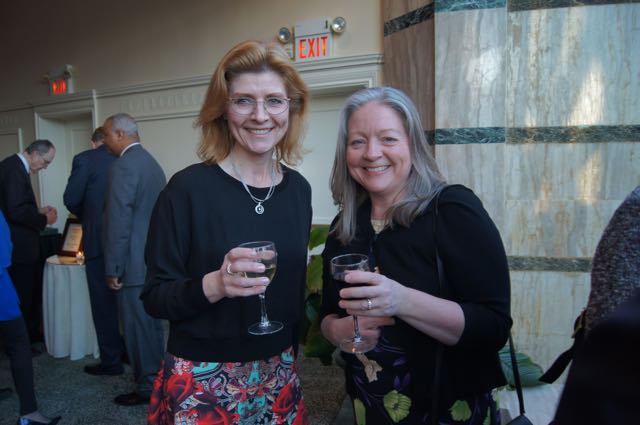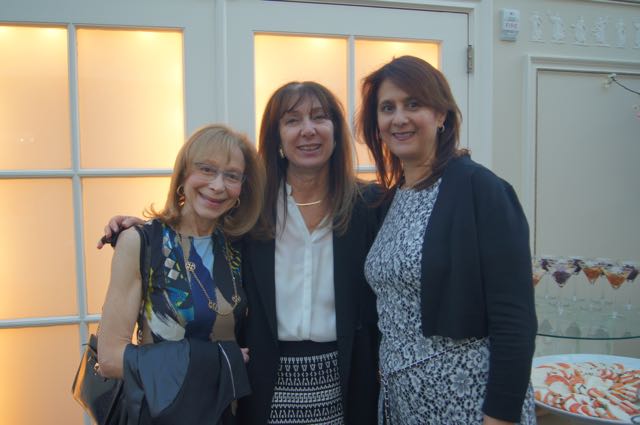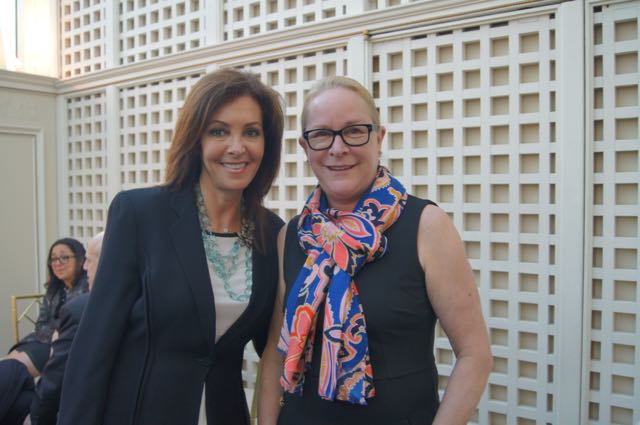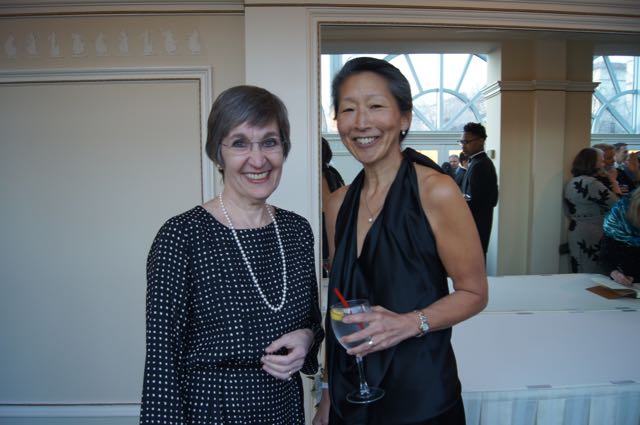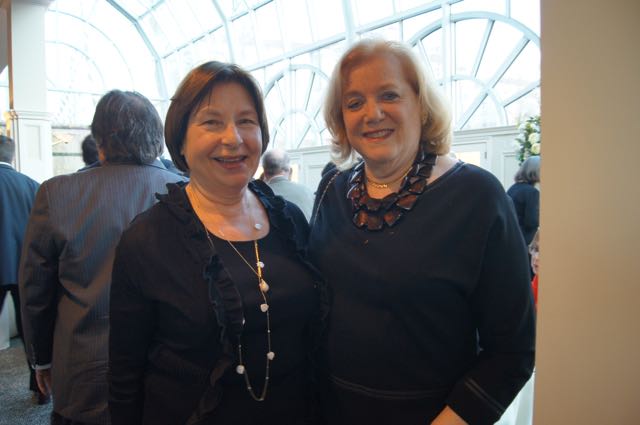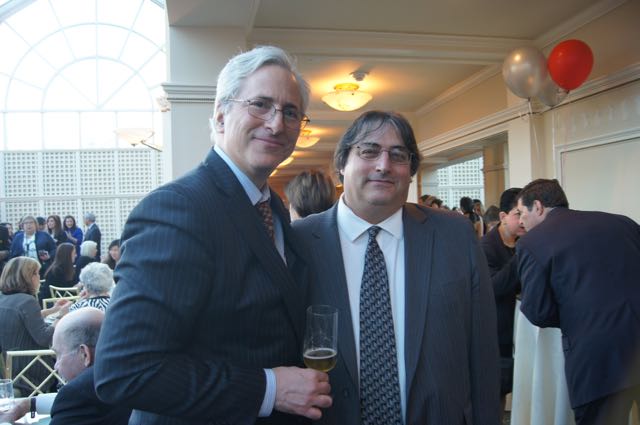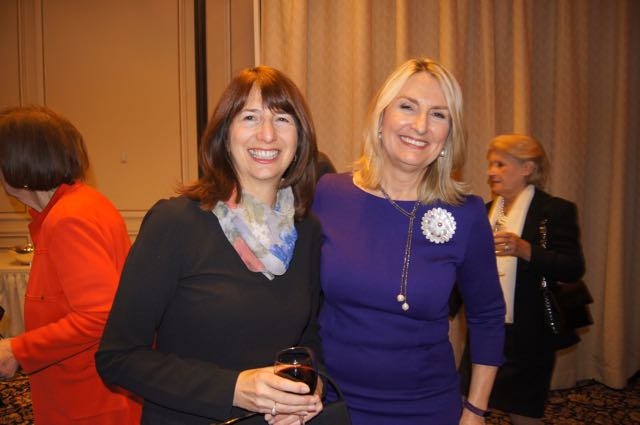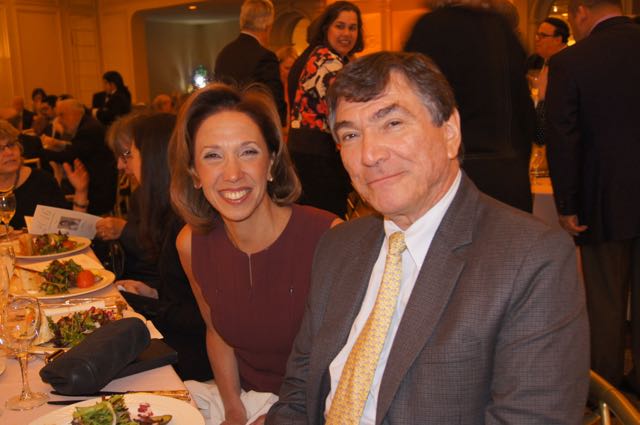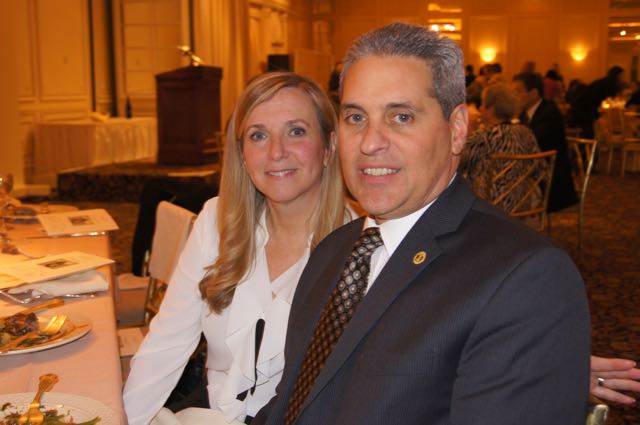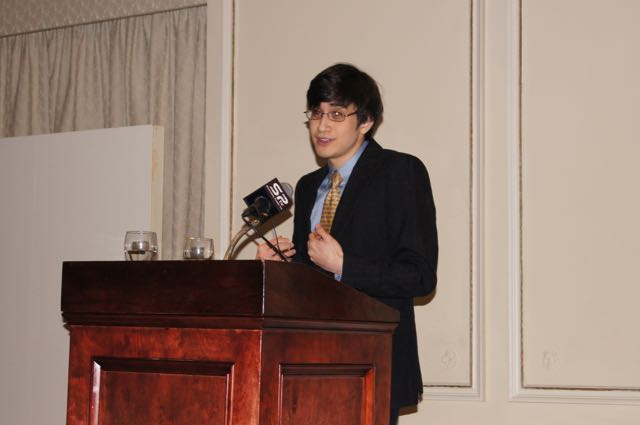Residents Grill Expert on Second Village-Wide Revaluation
- Details
- Written by: Joanne Wallenstein
- Hits: 5229
 How will the second village-wide revaluation in Scarsdale differ from the first? That was the question at a three-hour meeting of the Village Board of Trustees on Thursday April 21. Mayor Jon Mark opened the meeting by explaining that John F. Ryan, the man who monitoried the first revaluation and was subsequently hired to conduct the second revaluation, would review his process. Mark said while the first revaluation was done well, the "Second village wide revaluation will smooth some of the rough edges from the first one. We hope this will be an improvement on how things stand. A different modeling approach is going to be used. We will do our utmost to be transparent with this process. The results will be posted on June 1. Mailers will go out on June 2 with property valuations. The mailers will also explain how the number was derived. You won't have to go through the laborious foil process." The meeting was recorded and you can watch it here.
How will the second village-wide revaluation in Scarsdale differ from the first? That was the question at a three-hour meeting of the Village Board of Trustees on Thursday April 21. Mayor Jon Mark opened the meeting by explaining that John F. Ryan, the man who monitoried the first revaluation and was subsequently hired to conduct the second revaluation, would review his process. Mark said while the first revaluation was done well, the "Second village wide revaluation will smooth some of the rough edges from the first one. We hope this will be an improvement on how things stand. A different modeling approach is going to be used. We will do our utmost to be transparent with this process. The results will be posted on June 1. Mailers will go out on June 2 with property valuations. The mailers will also explain how the number was derived. You won't have to go through the laborious foil process." The meeting was recorded and you can watch it here.
Ryan said, "This process started out almost a year ago. We looked at sales and did an analysis. We focused on updating existing values to market values as of June 2015, but did consider sales that closed up to 3 months after that. We used the latest information possible. We have to set the value as of July 2015."
He continued, "The goals of this revaluation are the same goals of any revaluation:
1) to generate accurate values
2) to generate uniform values
Ryan said, "The Village has the responsibility for uniformity... no one should pay anymore than their fair share.... An assessor went out in the field and reviewed the properties, looking at the characteristics that are most important in assigning values." According to Ryan, "The data from the first evaluation was very good. There was a very high entry rate and it was done very thoroughly."
For this reval, "An assessor rode the entire community and looked at all the properties from the public way. The Village looks at all open permits and the Assessor's Office looked at grievances and also considered new sales data. We will continue to look at the data right up to the June 1 deadline. The letter that you receive will show the data about the property. You will be able to see how your value was derived."
Ryan then displayed the following sales data for the overall number of home sales and for the number of sales of homes priced at $2.9 million and up. He said that they use the median not the mean sale price because it is a better reflection of sales activity in the area. It is evident that the total number of total sales has remained fairly constant.

Ryan continued, "There is still an active market. We use as many sales as we need to come up with a solid model. The more transparent and understandable the evaluation process is, the wider the acceptance from the public. We don't hide behind statistics – the model should be understandable."
Furthermore, the new model uses fewer factors or variables then the previous one. Ryan said that the previous model had "Too many gradations and too many factors. We minimized the number of gradations. We changed the number of gradations form 43 to 14. We consolidated the neighborhoods significantly. There are no more sub neighborhoods."
He explained, "I know that property owners will be happy that they can use the formula to replicate their value. We value total properties, not land and homes. For vacant lots we need to estimate the value of the built site. Where you do not have an improved property, the assessor has to estimate the value of a built property."
The audience was primarily comprised of people with homes in the Heathcote Association and they were not reassured by Ryan's update. They seemed to be more focussed on the prior revaluation than on the proposed improvements for the upcoming one.
They voiced their unhappiness about a range of issues including:
-The Village's manager's offices failure to do a better job publicizing the meeting.
-Issues with their valuations as determined in the July, 2014 revaluation
-Mistrust of the process
-A perception that the prior revaluation had killed the market for higher priced homes valued at more than $2.9 million in Scarsdale.
Ron Parlato who is both a resident and a builder said, "I learned that the first revaluation was not done properly. I think it was a flawed valuation... There is a bent to come after the wealthy people in this town ... people who give to this town. I am tired of it."
He continued, "I want the board to hire an outside company to tell us what went wrong with our assessment. The market has been destroyed in the upper level."
He continued, "I am on 2.7 acres and I live in 10,000 square foot house with another structure that is 1,200 square feet. I had to hire a lawyer and an appraiser. And I went to court and was dropped from $7.4mm to $6.5mm." He yelled at the Trustees, saying, "The first revaluation was not done properly in this town. Hire an outside expert to do a complete study of the Tyler Assessment... I am really angry – I am a builder and a homeowner. I am not putting up with this anymore."
Parlato's son-in-law Steve Rakoff who is a developer and realtor spoke at length. He repeated many of Parlato's concerns and said, "You have destroyed every persons nest egg in this room." "I want this thing done right. I want the data to be independently analyzed. We have no confidence in $2.9 million and up. The market is limping along. Sales volume is irrelevant. We cannot be in a town that does not want truth and justice."
He continued, "We had a perfect system running for 40 years. We destroyed a billion dollars in equity in this town. On my street there are 7 listings. I say it (the assessment process) was never broken."
About the 2014 revaluation he said, "4,500 homes got a discounted assessment ratio. They got a discount! The ½ acre and smaller lots got a discount."
Peter Katchis of 3 Morris Lane said that he has been here for 48 years. He bought 2.5 acres in 1968. It is a non-conforming lot that is long and narrow. He built his 3,600 square foot home according to zoning regulations, developing an acre and half and leaving the rest as woods. He complained that after the 2014 revaluation his taxes went from $50,000 to $90,000 and he was given an assessed value of $4.1 million. He hired his own assessor who valued the property at $3.1 million but the Village assessor did not reduce his assessment.
Bob Harrison expressed his anger that the meeting was not better publicized and that the new assessed values would not be released until June. He yelled at Ryan, saying "Why can't you spit out the values sooner? You've been working on this since last summer. "What have you been doing for 6-8 months? We have a tax increase. We have elderly people who can't afford an increase in their taxes. People are living on fixed incomes."
Turning to the Trustees he said, "I hope you are going to reduce the tax increase next Tuesday. You are allowed to change that and apply more of the fund balance. You have the money – it should not be in your pocket!"
The Mayor interrupted Harrison, saying "It is not in our pocket. Sit down Bob."
Mary Katchis who has been a broker for over 40 years in Scarsdale/Edgemont said, "There are no sales over $5mm. Something must be done. What should I tell my clients? We can't get a buyer. The taxes are turning many people away."
Watch the entire meeting on the Scarsdale Public Television website here.
Panel Emphasizes the Importance of Community Connectedness in Emergency Reponse
- Details
- Written by: Joanne Wallenstein
- Hits: 4650
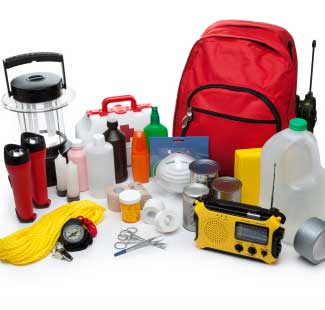 Scarsdale was caught off guard in 2012 when Hurricane Sandy took down the power and knocked out Village Hall's communication system. Though Village Managers did manage to send out emails using the school's servers, and used a back-up plan to call residents with daily updates, the situation was far from ideal. Since that time, the Village has taken steps to ensure they will be better prepared in case of another emergency and has also issued recommendations to residents about what they can do to be ready.
Scarsdale was caught off guard in 2012 when Hurricane Sandy took down the power and knocked out Village Hall's communication system. Though Village Managers did manage to send out emails using the school's servers, and used a back-up plan to call residents with daily updates, the situation was far from ideal. Since that time, the Village has taken steps to ensure they will be better prepared in case of another emergency and has also issued recommendations to residents about what they can do to be ready.
This year's Village budget includes funds for a generator for Village Hall and they have also rewired their phone lines so that they have a back-up communication system in case their lines go down.
A group called the Scarsdale Community Support Council was formed to make recommendations on coordinating emergency response efforts and to promote the social and emotional wellness of the community.
The Council joined forced with the Scarsdale Forum on Thursday April 14 to discuss the Village's emergency response plan and increase resident's awareness.
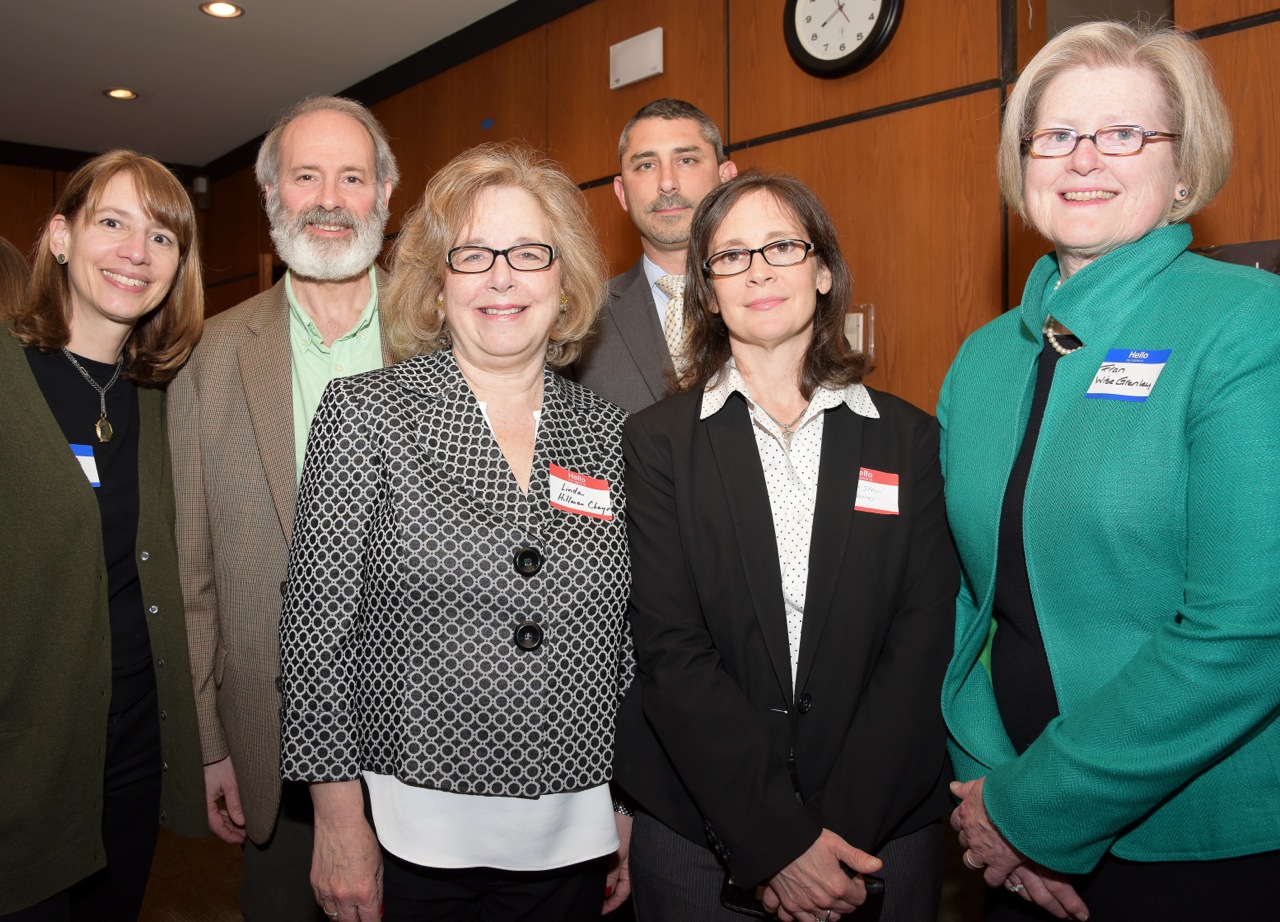 Deputy Village Manager Robert Cole presented the Village's Emergency Management Plan, highlighting the Village's protocols and chain of command. He explained that in times of crisis, local, state and federal authorities can declare a state of emergency that allows for the use of resources to assist local governments and also permits municipalities to recoup their costs following the emergency.
Deputy Village Manager Robert Cole presented the Village's Emergency Management Plan, highlighting the Village's protocols and chain of command. He explained that in times of crisis, local, state and federal authorities can declare a state of emergency that allows for the use of resources to assist local governments and also permits municipalities to recoup their costs following the emergency.
The Village's incident command system provides a framework for communications from the incident commander down to the respondents. He explained that rules for the Unity of Command and Span of Control dictates the command structure, with each supervisor managing only three to five people. The unified command reporting structure requires police, fire and public works commanders to report to one source that assigns priorities.
As a resident, what can you do to ensure your own safety? Cole advises that residents do the following:
Before an emergency: Make plans to be initially self-sufficient
During an emergency: Trust your emergency management official
After an emergency – support your community
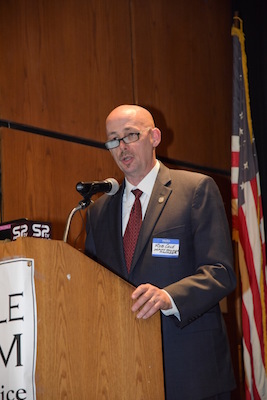 He advised all Scarsdale residents to sign up for the Village's Blackboard Management System to receive emergency notifications from the Village of Scarsdale. He recommended that you provide the Village with both your email address and cell phone number, as sometimes texts will go through when email goes down. Here is the link to Blackboard Connect:
He advised all Scarsdale residents to sign up for the Village's Blackboard Management System to receive emergency notifications from the Village of Scarsdale. He recommended that you provide the Village with both your email address and cell phone number, as sometimes texts will go through when email goes down. Here is the link to Blackboard Connect:
What else should you do?
Be informed and identify likely local hazards and understand how to access information.
Make a plan with your family on where to meet in case an emergency prevents you from coming home.
Assemble an emergency kit – Click here to see the Red Cross recommendations for what you will need: or visit FEMA for their guidelines.
Keep your important papers in one place so that you can access them in case you need to get out quickly.
Several members of the Community Support Council then held a panel discussion. The panelists included Council Chair Linda Hillman Chayes, Minister Fran Grenley, former President of the Greenacres Association Barry Meiselman and President of the Murray Hill/Middle Heathcote Neighborhood Association, Laura Miller. Chayes explained that the Council was formed five years ago after a cluster of suicides and seeks to develop an interconnected Village support system and promote a greater sense of community in Scarsdale.
They recommended that residents get to know their neighbors, "Not just for emergencies: but because that's what enriches our lives," said Grenley. Meiselman shared how neighbors were able to help one another during the storm, offering shelter to those without heat. He encouraged everyone to get their neighbors contact information so that they can reach out to them in case of an emergency. Laura Miller is working to increase membership in neighborhood associations and encourages everyone to sign up for their own neighborhood association. She said, "We are hoping to hold more events to increase connections, reduce risks and make people feel connected."
Photo Credit: Marjorie Meiman
Community Lauds Scarsdale Bowl Recipient Susie Rush
- Details
- Written by: Joanne Wallenstein
- Hits: 7144
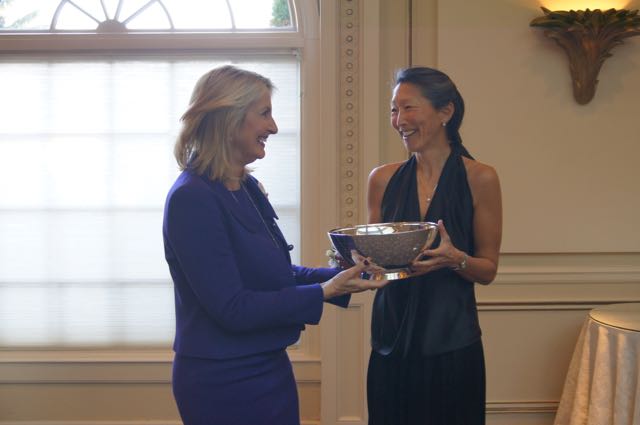 In accepting the community's highest award for public service, on April 13, 2016, Susie Rush recalled that when she moved to Scarsdale in 1995, a partner at her law firm told her she'd never fit in. Twenty one years later, it's clear that he underestimated Rush and Scarsdale, where she not only "fit in," but became a model citizen. Though typical Bowl recipients are former mayors, trustees or school board members, Rush has not taken on those roles, but has served the community in her own unique way; by taking on leadership positions in the PTA, the PT Council, the League of Women Voters, the SBNC, the Teen Center, the Scarsdale Foundation and more.
In accepting the community's highest award for public service, on April 13, 2016, Susie Rush recalled that when she moved to Scarsdale in 1995, a partner at her law firm told her she'd never fit in. Twenty one years later, it's clear that he underestimated Rush and Scarsdale, where she not only "fit in," but became a model citizen. Though typical Bowl recipients are former mayors, trustees or school board members, Rush has not taken on those roles, but has served the community in her own unique way; by taking on leadership positions in the PTA, the PT Council, the League of Women Voters, the SBNC, the Teen Center, the Scarsdale Foundation and more.
In accepting the Scarsdale Bowl at the Fountainhead in New Rochelle, the modest Rush shined the light back on the community, saying the people she met here are "intelligent, thoughtful, passionate and dedicated, who bring distinctive backgrounds and perspectives to every discussion." She thanked her husband for giving her "the space and the support" to do whatever she wanted or needed to do and her two boys, David and Jonathan "for taking the time from school to be here tonight, adding, "Now I know how to get you both down here at the same time – I just have to get the Scarsdale Bowl."
Discussing volunteerism in Scarsdale, Rush continued, "There is something very special about the collection of people who live here, who make Scarsdale unique in a way that isn't obvious from reading the paper. It's an indescribable quality that you can fully understand only by working alongside one another, studying an issue, listening to each other, engaging in discussion, trying to come to agreement. When one of my sons asked me early on why I volunteered, I told him it was important to give back to the community we live in. But I know I've received much more than I've given."
What about fitting in? Rush said, "I don't know whether my former law firm partner would say I fit in here after all. Who knows what 'fit in' means anyway. But I will say to anyone who lives here, regardless of how long you've lived here, how old you are or where you come from, if you embrace Scarsdale and its opportunities to serve, it will embrace you back and you, and we, will be better for it."
Her son David, a doctoral candidate in mathematics at MIT said, "When I was growing up people used to say your parents must be so proud of you. I was blissfully unaware of all my mother did for the community, and how proud we should be of her." He remembered second grade when he rode his bike to school and his mother walked beside him everyday. At the end of each day he came out to find his mom there to pick him up in the car. One day it occurred to him that he didn't know what happened to his bike. He realized that Susie rode the half-mile home on the tiny bike each day so that David could ride to school. He said, "She is exactly the kind of person you want to have in your corner. She's brutally honest in private but goes out and defends you in public." He concluded by saying, "We are so glad to see that the community has recognized her for all she has done. We've seen it day and day out."
Susie juggled her commitments to the community with her job as legislative analyst for State Assemblywoman Amy Paulin, who credits Rush with being the "person behind the legislation." Calling Rush a "pit bull with a sweet demeanor," she complimented Rush for being meticulous and organized while turning complicated ideas into law." Saying Rush was instrumental in getting many of (Paulin's) laws passed, she said, "We make a great team .... Susie's skills complement my skills." The two recently worked on a domestic violence/gun control law and Paulin said that Rush won over the Republicans and the FBI to get it passed.
Her friend Lauren Meyers remembered Susie's reaction after 9/11, when Rush was the President of the Quaker Ridge PTA. Meyers said that while everyone was busy looking after themselves and their own families, Rush was calling those who needed help and reaching out to the community to see what she could do. About her friend Susie she said, "She never accepts credit, she sees the trees while we trip over the leaves and she empowers other people to make a difference."
Evelyn Stock, who heads the Scarsdale Foundation, the group that administers the Scarsdale Bowl, said. "When I first saw Susie speak supporting the renovation of the
Quaker Ridge School my reaction was, "Wow, how did Scarsdale get so lucky." Stock told the room that the Foundation supports need based scholarship for SHS graduates, sends kids in need to the Scarsdale Day Camp and has given help to SVAC, SFSC, the Teen Center and more. She extolled the health benefits of volunteerism and encouraged the audience to reach out to their neighbors and invite them to join their volunteer activities. She said, "The future of Scarsdale is in your hands. Start tomorrow."
Michelle Lichtenberg, Chair of the Scarsdale Bowl, thanked the Foundation, the Bowl Committee, (named below), former Bowl recipients and all the people "who are deeply involved in the tradition of volunteerism, who make substantial efforts on behalf of our schools, our village government, civic, recreational, religious, and social service organizations." Michelle remembered meeting Susie in 2001 when Susie was the President of the Quaker Ridge PTA and Michelle was the incoming President of the SHS PTA. The first Tuesday of school was 9/11 followed by the anthrax scare. Michelle said that Susie "was a beacon of calm and sensibility, truly grace under fire.... always clear-sighted and a thoughtful problem solver she was a pleasure to work with."
The event was attended by a wide swath of the community, local lawmakers, former Village Manager Al Gatta, former schools superintendent Michael McGill, the staff of Amy Paulin's Office and many others who have worked with Susie in her various roles. There was an overwhelming feeling of pride in the room for a gracious, savvy and exemplary woman who has already done so much for others and will hopefully continue to participate in the years to come.
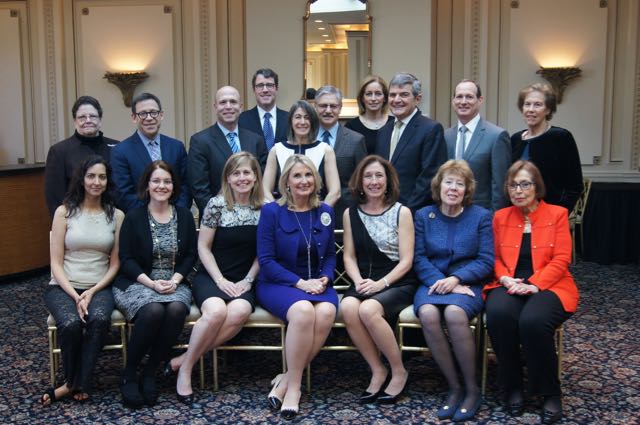 Pictured above: the Scarsdale Bowl Committee: Michelle Lichtenberg (Chair). Evelyn Stock, Robert Jeremiah, Felicia Block, Beth Ehrich Berkeley, Jonathan Bradlow, Kay Eisenman, Fran Galloway, Susan Hochvert, Gary Katz, Janet Korins, Anne Lyons, Eli Mattioli, Jay Musoff, Michael Pollac, Jyoti Ruta and Jane Veron.
Pictured above: the Scarsdale Bowl Committee: Michelle Lichtenberg (Chair). Evelyn Stock, Robert Jeremiah, Felicia Block, Beth Ehrich Berkeley, Jonathan Bradlow, Kay Eisenman, Fran Galloway, Susan Hochvert, Gary Katz, Janet Korins, Anne Lyons, Eli Mattioli, Jay Musoff, Michael Pollac, Jyoti Ruta and Jane Veron.
Village Trustees and Justice Sworn Into Office
- Details
- Written by: Joanne Wallenstein
- Hits: 3751
 The Scarsdale Village Trustees and Village Justice were sworn into office at Scarsdale Village Hall at noon on Monday April 4. Village Justice Joaquin Alemany and Village Trustees Deb Pekarek, Marc Samwick, and Jane Veron all took the oath of office from Village Clerk Donna Conkling. Pekarek and Samwick return for their second two-year terms, while Veron will begin her first term of office.
The Scarsdale Village Trustees and Village Justice were sworn into office at Scarsdale Village Hall at noon on Monday April 4. Village Justice Joaquin Alemany and Village Trustees Deb Pekarek, Marc Samwick, and Jane Veron all took the oath of office from Village Clerk Donna Conkling. Pekarek and Samwick return for their second two-year terms, while Veron will begin her first term of office.
See the photos here:
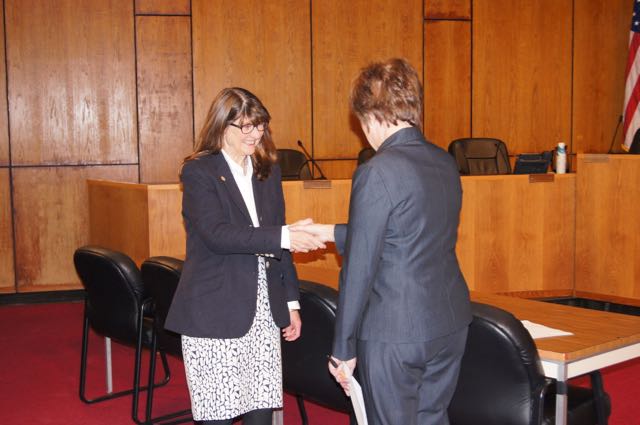
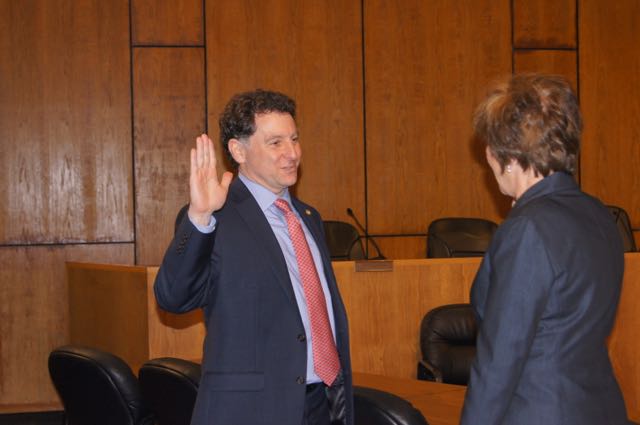
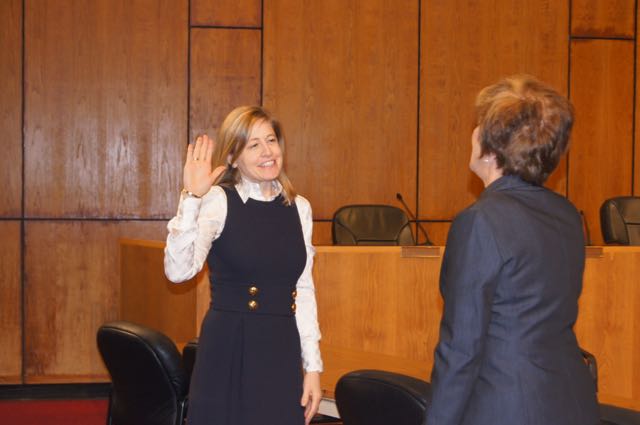
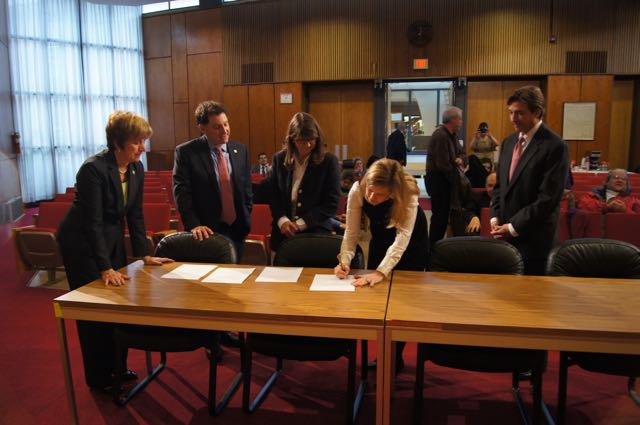
Accolades for Scarsdale Village Trustee David Lee
- Details
- Written by: Joanne Wallenstein
- Hits: 5145
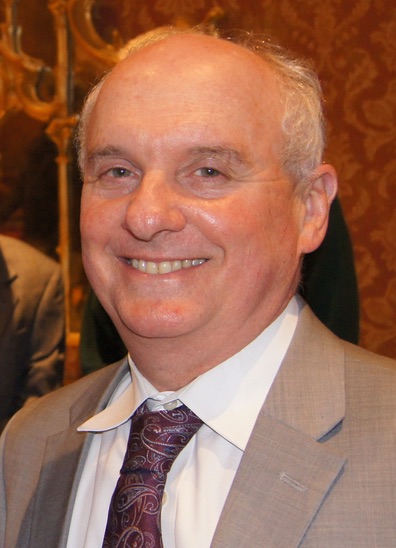 Trustee David Lee marked four years as Village Trustee at his final meeting on March 22. Following an early dinner to celebrate their service, the trustees convened at Village Hall and gave Trustee Lee his due. Many remarked on Lee's keen insight, patience and ability to see all sides of an issue as well as his quiet way of examining questions and bringing the Board to consensus.
Trustee David Lee marked four years as Village Trustee at his final meeting on March 22. Following an early dinner to celebrate their service, the trustees convened at Village Hall and gave Trustee Lee his due. Many remarked on Lee's keen insight, patience and ability to see all sides of an issue as well as his quiet way of examining questions and bringing the Board to consensus.
Here are excerpts from the trustees' and publics' comments:
Matt Callaghan said, "David Lee has a gift of getting to the point of the matter, both orally and in writing and in bringing the group to consensus. I thank you for that."
Carl Finger thanked Lee for taking "an interest in facilitating my participation on the board." He continued saying, "He showed me the ropes and helped me to hit the ground running. I found your comments to be mind altering in a good way and to see things from a perspective I had not thought of ... and to regret speaking before you."
Deb Pekarek said, "With a twinkle in his eye, an ability to see all sides of an issue, he weighs each idea to discern the most compelling resolution. He listens attentively. He asks questions that get to the heart of a matter and provides unique depth to our conversations. He respectively incorporates opposite views. David is a great neighbor too; biking to the train station and attending multiple meetings in one evening." She concluded, "It was an honor to work with you. You are a patient and gentle man."
Marc Samwick credited Lee with an "Open and inquisitive mind." He said Lee is "Deliberative and unbiased with every issue and listens intently. He thinks in a deeply contemplative way that yields a balanced and fair approach. I learned a lot from you."
Bill Stern said, "Board resolutions are not decided overnight. They require great insight into unintended consequences. David has a sharp mind. He looks at all the issues. Sometimes he changes my view. He has a tremendous legal mind. He is very insightful and looks at the residents' interests. He will be sorely missed."
Mayor Jon Mark: "David – It has been a pleasure serving with you, a fellow Scarsdale High School graduate, on this Board. After a somewhat rocky take off that involved your surviving one of your first Board assignments, the reading of a resolution to euthanize geese that were visiting the Library Pond – a solution the board was persuaded not to pursue – your career as Trustee took flight.
Your work on land use issues, your liaison work with various Boards and Councils and your vetting of my Mayor's comments all evidenced your commitment to the Village, your analytic skills and sense of balance and fairness.
Throughout your term you maintained an unflappable nature, heard residents out and approached the Staff and your colleagues on the Board with thoughtfulness and consideration.
I thank you for your diligent contribution to the Board and the Village over the past four years. It is my hope that you will continue to find time in the future to volunteer your valuable skills to the town in which we grew up.
Former Trustee Kay Eisenman said: "My first order of business is to tear up a speech I had written for Deb Pekarek. David Lee is an excellent and dedicated individual. with a quiet calm demeanor. He grasps athe issues and teases apart the salient points of any problem. He quickly get to the core of any issue." She continued, "You are fair and balanced, with great skills. You recognize there is not an immediate solution to every problem. You have the patience to seek high ground and therefore lasting results. Thank you David. You are one of those dedicated people who believe in all work and no pay."
Former Mayor Bob Steves also lauded David Lee, calling him a "Thoughtful individual who has added much to this village. David is an example of the quality of individuals this village has been able to attract to manage it. If people had more insight into the quality of the people who serve, there would not be cynicism and negativity around government. I urge the community to better understand the people who serve here. When we have the opportunity to work with people like David we should appreciate it."
Scarsdale10583 also thanks Trustee Lee who is always open to questions and is responsive with requests for information. He helped the board navigate controversial issues such as the tax revaluations, the Monte Nido proposal and the proposed resolution on gravel surfaces, always with a calm, measured and reasonable approach. We hope he continues to be involved in Village Government.
For his part, Trustee Lee had kind words about the contributions of each member of the Village Board which you can view on the Village Website.










